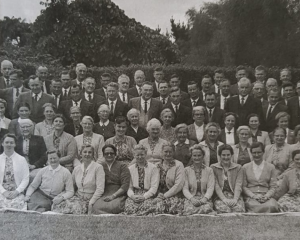
But such was the shallow 5.9 quake’s long distance from the mainland – it hit 450km south of the South Island, and 285km southwest of the remote Snares Islands – that just one person reported feeling it on GeoNet.
It happened to strike near a little-understood seismic zone that’s produced some of the most powerful earthquakes in New Zealand’s recent history.
That was the Puysegur Trench: a plate boundary where the Australian plate dives below the Pacific plate - the opposite way to how the two plates subduct in the North Island, in the better-known Hikurangi Subduction Zone.
The boundary stretches for more than 800km south from the South Island, to a point in the wild and windy Southern Ocean, around 400km west of the Auckland Islands.
In 2009, the 7.8 Fiordland earthquake struck close to the northern end of the trench, releasing 25,000 times more energy than the atomic bomb dropped on Nagasaki in 1945 and twisted the South Island, moving Puysegur Pt on the southwestern tip of the island 30cm closer to Australia.
Its remote location, near Dusky Sound, meant there was relatively little damage.
A magnitude 7.2 quake hit the trench itself in November 2004 – a month before an 8.1 quake near the trench caused shaking felt as far as Tasmania.
GeoNet duty seismologist Dr Jonathan Hanson said we could be reasonably confident this afternoon’s quake was related to subduction zone processes in the area."The fact that we see quite a lot of events located in a really similar area reinforces that it’s likely to be related to some ongoing processes there."
In the past 20 years, scientists have located about 100 events in the region.
"The actual amount is likely to be much higher than that, but because we’re far away from our instruments, it’s tough to get a full feeling for how active the seismicity is down there - other than we need an event to be above magnitude five, to be relatively confident in it."
Hanson said events like today’s were also useful for shedding fresh light on what was a difficult-to-study earthquake zone."One of the things that caught my eye with this one was that it was a strike-slip event, whereas down in that area, we tend to see a mix of reverse and strike-slip."
In strike-slip faulting, each side of the crustal block slides past the other without uplift and down-thrust, while in reverse faulting, the block above the fault moves up relative to the block below the fault.
"That’s quite an interesting phenomenon itself, that we can be seeing two distinct kinds of earthquake activity in this area," he said.
"But the main thing to take away from this, is that it’s a reminder we have a subduction zone off the South Island that is productive and capable of generating large, tsunamigenic events."
In this afternoon’s case, no tsunami threat to New Zealand had been identified.












